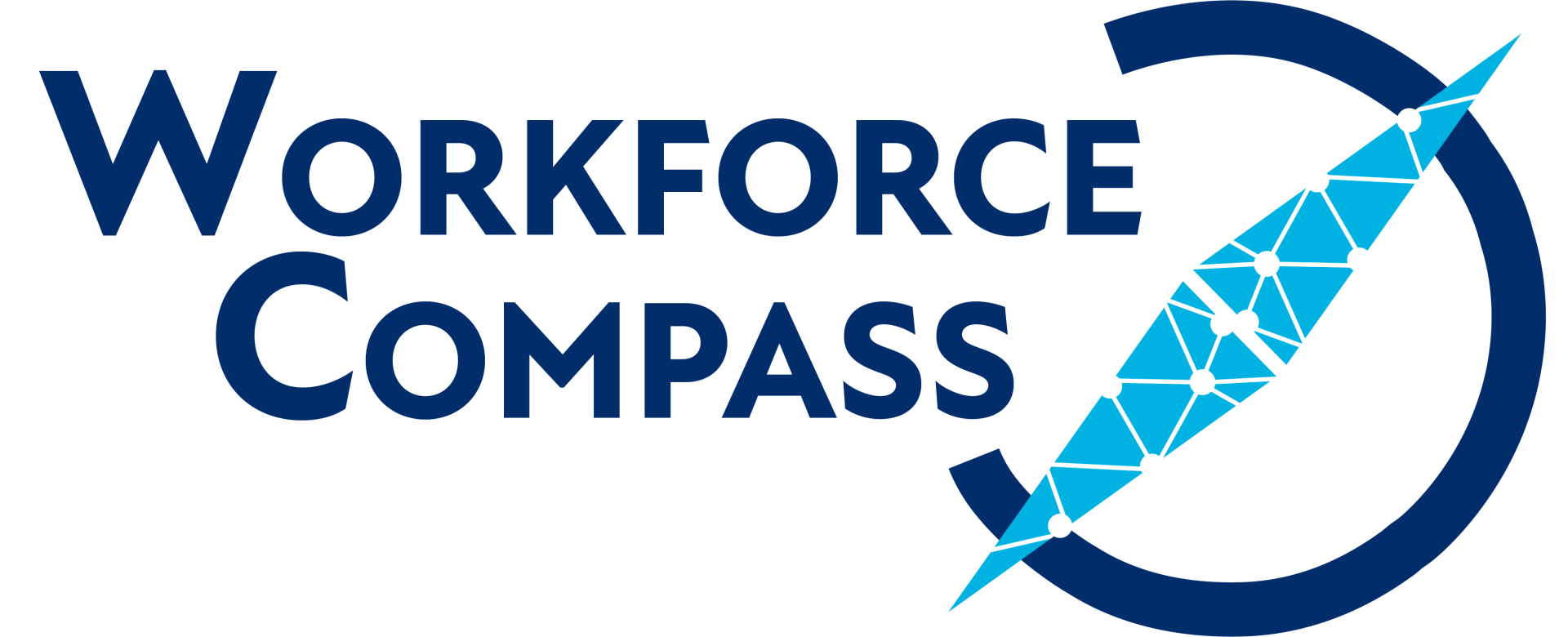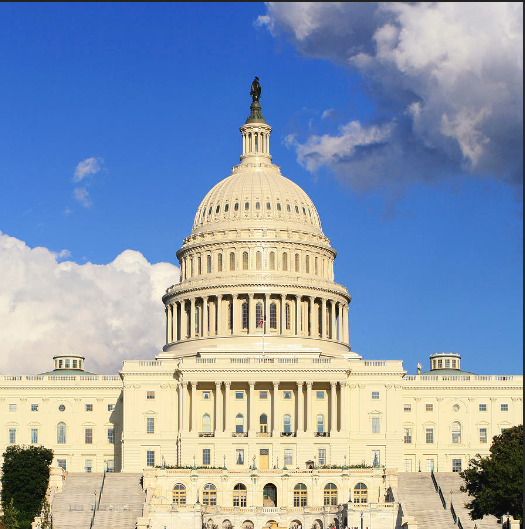Blog Layout
National Association of Workforce Boards Launches AI-Powered Career Navigation and Learning Platform

The Workforce Compass platform will empower workforce development boards across the country to expand and strengthen their services for job seekers
Today the National Association of Workforce Boards (NAWB) launched an AI-powered career navigation and learning platform, Workforce Compass, in partnership with technology provider FutureFit AI, at its annual event The Forum in Washington, D.C. The platform will enable participating workforce development boards to provide job seekers with career exploration, reskilling, and job placement support that is personalized through local labor market data and artificial intelligence.
Workforce Compass will enable workforce development boards to expand and strengthen their services for job seekers, aggregate national and local learning options on one simplified platform, and access real-time progression and outcomes data.
An inaugural set of learning partners and workforce development boards will help shape the launch of the Workforce Compass platform as it expands to support job seekers around the country. The five inaugural workforce development boards and their staff will have the opportunity to inform the development of the platform to ensure Workforce Compass maximizes its impact for job seekers and the organizations that serve them. "By integrating with both local and national providers, Workforce Compass is uniquely positioned to help us achieve sustainable, high quality career outcomes for job seekers in our community," said Mark Mattke, CEO of the Spokane Workforce Council. "We are excited to be an inaugural member of an innovative partnership that is poised to unlock the full potential of workforce development boards' service delivery model."
Initial national learning and training providers include Coursera, LinkedIn Learning, Calbright College, Penn Foster, and MedCerts, and will be driven by local decisions on learning and service provider options for each community. “Public-private partnerships will be critical to addressing the unemployment crisis and upskilling displaced workers for well-paying digital jobs,” said Jeff Maggioncalda, Coursera CEO. “Coursera is excited to partner with Workforce Compass to provide job-seekers with access to a wide range of industry-relevant credentials from leading technology educators like Google and IBM and equip them with the skills needed to re-enter the workforce.”
During The Forum’s opening keynote session, NAWB President and CEO Ron Painter said, “NAWB is excited to announce our new partnership with FutureFit AI and innovative learning providers on this groundbreaking career navigation and reskilling platform. During the initial design process of the platform, we worked with a great group of workforce development boards to ensure Workforce Compass will directly address common pain points.
This platform will complement the extraordinary work that workforce professionals are doing across the country to support job seekers and connect them to the appropriate learning and credentialing resources that best fit their needs.”
"There are more job seekers than ever who need support navigating high-demand career paths in the economy, and local workforce development boards across the country will be the backbone of our economic recovery efforts," said Taylor Stockton, COO of FutureFit AI. “FutureFit AI is thrilled to be partnering with NAWB to launch Workforce Compass at a crucial time in that recovery.”
For more information on the Workforce Compass platform please visit: https://www.nawb.org/initiatives/workforce-compass.
###
About the National Association of Workforce Boards
The National Association of Workforce Boards represents over 500 Workforce Development Boards and their 12,000+ business members that coordinate and leverage workforce strategies with education and economic development stakeholders within their local communities, to ensure that state and local workforce development and job training programs meet the needs of employers. For more information on NAWB’s latest work and new initiatives, please visit www.nawb.org.
About FutureFit AI
FutureFit AI partners with companies and governments around the world to provide an AI-powered tool that helps individuals navigate career transitions. FutureFit AI uses over 350 million global talent profiles, live labor market data and projections, and proprietary algorithms to provide personalized career and learning recommendations. For more information on FutureFit AI, please visit www.futurefit.ai.
About Calbright College
Calbright College is a public, digital community college campus designed to prepare workers across California for new careers that offer great pay, full benefits, and future opportunities for promotion. Calbright blends best practices from online instruction and traditional workforce development into a unique experience that promotes and supports students from registration to career support. Launched in late 2019, Calbright is the 115th California community college and 73rd district, governed by an independent Board of Trustees serving concurrently as the California Community Colleges Board of Governors.
About Coursera
Coursera was launched in 2012 by two Stanford Computer Science professors, Andrew Ng and Daphne Koller, with a mission to provide universal access to world-class learning. It is now one of the largest online learning platforms in the world, with 82 million registered learners as of March 31, 2021. Coursera partners with over 200 leading university and industry partners to offer a broad catalog of content and credentials, including Guided Projects, courses, Specializations, certificates, and bachelor’s and master’s degrees. More than 6,000 institutions have used Coursera to upskill and reskill their employees, citizens, and students, including in high-demand fields such as data science, technology, and business.
About LinkedIn Learning
LinkedIn Learning is an online learning platform that enables professionals to develop in-demand skills to achieve their goals. We empower learners to discover the content they need with real-time skills insights, an expansive library of 16,400+ courses in 7 languages taught by expert instructors, and an engaging and intuitive learner experience. For more information on LinkedIn Learning, visit https://www.linkedin.com/learning.
About MedCerts
MedCerts is a national online training provider strengthening the workforce through innovative eLearning solutions. Focused on certifications in high-demand areas of Allied Healthcare and IT, it serves individuals from all backgrounds, including the military and their families, career changers and the under- and unemployed. MedCerts delivers certification and career training through HD-quality video-based instruction, virtual simulations, games and animations, and on-the-job training through experiential learning solutions. Since 2009, the company has developed over 35 career programs, trained and up-skilled more than 25,000 individuals across the country and partnered with over 500 American job centers and more than 1,000 healthcare organizations have MedCerts trained employees on staff. For more information, visit https://www.medcerts.com.
About Penn Foster
Penn Foster is bridging the gap between education and economic opportunity to build tomorrow's workforce. We partner with employers, education and workforce organizations, and local community groups to design and deliver digital and blended learning programs that attract, upskill, and retain workers in America's fastest-growing fields and professions. With more than 40,000 graduates each year, Penn Foster helps individuals discover pathways to opportunity through accredited diploma, certificate and degree programs that matter in the world of work. For more information, visit https://www.pennfoster.edu.

By Stacy Heit
•
12 Dec, 2023
NAWB responded to the latest WIOA reauthorization proposal on Dec. 12, 2023, in a letter addressed to the chair and ranking member of the House Education and the Workforce Committee. Read the full letter below. Dear Chair Foxx and Ranking Member Scott, On behalf of the National Association of Workforce Boards (NAWB), representing more than 590 state and local workforce development boards (WDBs) across the nation, I am writing in response to the committee’s recent introduction and consideration of H.R. 6655, A Stronger Workforce for America Act (ASWA) to outline our organization’s reservations regarding core aspects of this draft proposal as well as to highlight other, more encouraging, elements of the legislation that we believe would have a positive impact on WDB operations and the wider publicly funded workforce system. Reauthorization of the Workforce Innovation and Opportunity Act (WIOA) is of critical importance to our organization and our members, particularly at a time of significant change in the wider economy and labor markets. Updating the primary federal investment in WIOA provides Congress an important opportunity to make changes to this legislation to ensure that workers, learners, and employers have a system that is nimble, flexible, and responsive to their needs. As ASWA continues to advance through the legislative process, we look forward to working with you as you and your colleagues further refine and build upon this draft proposal using the recommendations and perspectives outlined throughout this letter. NAWB shares your desire to get more training out of the publicly funded workforce system. However, we strenuously disagree with the proposed strategy contained in ASWA—a narrowly defined federal training mandate—to achieve this vision for the future. Such a mandate is at odds with the state and local governance structure that has long been a hallmark of the primary federal investment in workforce development. Congress has long empowered states and local entities to deliver the programs and services authorized by WIOA due to their proximity to the people being served. State and local WDBs’ understanding of the unique employment needs of the diverse communities they serve is necessary to effectively meet the challenges facing individuals with barriers to employment. A federal mandate, however, removes agency from states and local entities to do this in ways that make sense for their communities, regardless of the actual needs of the populations that must be prioritized by the publicly funded workforce system. As you know, the populations that are most frequently served by WIOA face some of the greatest barriers to finding and obtaining family-sustaining employment. These populations are not often in a position to immediately enter into education and skills development programs without significant wraparound services and supports to ensure their success. The proposed mandate’s structure does not acknowledge this important reality and has the potential for many unintended consequences that are likely at odds with this stated core goal of ASWA. This is especially true because the mandate proposed in this draft legislation is narrowly defined and does not allow for the provision of supports to ensure participant success. If enacted as currently constructed, this mandate has the potential to prevent individuals that need help from WIOA the most from accessing the supportive services and resources they need to be successful in education and skills development experiences that lead to better opportunities for themselves and their families. Put more plainly—while well intentioned, the currently proposed training mandate does not adequately address the need to provide the supports necessary to ensure participant success. Non-completion of mandated levels of training will not help workers nor does it help employers seeking to meet their talent needs. NAWB is also concerned that these challenges would be exacerbated by the proposed funding levels contained in the legislation. While we are appreciative of the new funding from H-1B visa fees envisioned in this legislation for Individual Training Accounts (ITAs) to address the requirements of the proposed training mandate, these funds are variable on an annual basis and are likely to ebb and flow each year based on changes to policy contexts that are difficult to predict. In addition, ASWA proposes only modest increases in authorized appropriations for Title I funding despite historic levels of underinvestment and disinvestment in WIOA and predecessor legislation over the past several decades—the primary reason why current levels of training provided by the WIOA system remain so low. ASWA also increases the allowable percentage of funding that can be reserved by the Governor to 25 percent of all WIOA Title I formula funding, including for the creation of a Critical Industry Skills fund. While we are appreciative that LWDBs are eligible applicants for some of these funds, these changes will further reduce the resources available at the local level to deliver training services newly mandated by ASWA. NAWB agrees that providing upskilling opportunities for workers is an important employment strategy for states which is why we have consistently called for greater local flexibility to make this a reality for more workers. As currently structured, however, ASWA would allow other federal funds, including the Governor’s existing 15 percent reserve funding, to be used to meet the state matching requirement for the creation of such an initiative. This will further reduce the ability of the federal investment to leverage additional state funding for training and employment opportunities for individuals. We therefore recommend that this matching requirement be narrowed to only allow nonfederal state funding to fulfill this requirement or eliminated entirely. For reasons outlined above, NAWB strongly opposes ASWA’s fifty percent training mandate and believes that it should be eliminated or substantially lowered from its current level. In addition, we believe that if a mandate is maintained as the legislative process continues, the underlying definition for what qualifies as training for this purpose be expanded to recognize the critical role supportive services have in ensuring individuals’ success in education and skills development. Our organization’s membership also has concerns regarding the redesignation process for local workforce development areas (LWDAs) proposed in ASWA. NAWB recognizes the need to ensure that LWDAs reflect the communities that they were created to serve and provide locally developed solutions to meet the needs of individuals and employers in these same communities. This is especially important as the nation has undergone dramatic transformations over the years since the time many LWDAs were first created. Yet once triggered by a Governor ASWA’s proposed redesignation process, as currently structured, would adversely impact the geography of all LWDAs in a state, even if a majority of LWDBs in the state vote against such a proposal. NAWB believes it is imperative that an option be included to maintain current LWDA designations should a majority of LWDBs in the state vote to preserve them. Despite NAWB’s reservations regarding these aspects of legislation, which we call on Congress to address as it is further considered as part of the legislative process, there were other positive elements contained in ASWA that we believe have the potential to constructively impact the publicly funded system in important and sometimes profound ways: - Clarifying LWDBs’ budgetary authority over the administration of adult, dislocated worker, and youth workforce development activities in a LWDA. - Improved flexibility to use virtualized services and affiliated sites to deliver one-stop services, along with allowing LWDBs to serve as one-stop operators under certain circumstances. While NAWB appreciates some of the changes made to funding of one-stop infrastructure costs, we strongly believe that dedicated funding is needed for this purpose, rather than the proposed increased Title I contribution, which would have the additional benefit of freeing up more funding for training and supportive services for eligible individuals and populations. - Increasing flexibility for LWDBs to provide reskilling and upskilling opportunities for individuals and workers. - The provision of professional development opportunities for staff and members of state and local WDBs. - A clear emphasis throughout the draft on skills-based hiring initiatives and other thoughtful strategies to clear the path between job seekers and employers, including changes to skills assessments conducted during the initial intake process to reward prior work and learning experiences. - Expanding the definition for foundational skills needs to include digital literacy skills, which we believe is an important reflection regarding the role of these competencies in an increasingly digital-first world. - Formally defining co-enrollment as a way to better promote this strategy as a systemwide priority to help more individuals access and receive the services they need. - A significant overhaul of how eligible training providers (ETPs) are identified, what criteria can be used to establish and maintain provider eligibility, and how related ETP lists (ETPLs) are leveraged to ensure quality. To further improve upon this aspect of ASWA, NAWB suggests building on these positive aspects and establishing clear thresholds and related incentives to establish multistate reciprocity agreements and ensure that providers of quality training opportunities can deliver programs and services to more individuals regardless of where they may reside. - The codification of the Workforce Data Quality Initiative (WDQI) including additional funding via the national dislocated worker reserve fund to increase the program’s funding level. These resources are critical to building the workforce data infrastructure needed to make many of the improvements envisioned elsewhere in ASWA a reality. We are also greatly appreciative of the changes made in ASWA that will enhance access to wage record information needed to reliably and accurately assess program and system performance. - Changes to the Title I youth funding stream, including a more inclusive definition for opportunity youth (OY) and the ability to use ITAs for youth populations. While we were encouraged to note that the mandated split of funds between eligible youth populations has now been modified to be statewide, we believe greater flexibility should be provided regarding this requirement. - Data transparency requirements, including an emphasis on the use of linked, open, and interoperable data schema throughout the draft that will dramatically improve workforce data quality and subsequent use by a variety of stakeholders, including promoting a key tenet of WIOA and carried forward by ASWA—informed consumer choice. - Allowing for public outreach and marketing of federally funded workforce initiatives to increase the public’s awareness of and familiarity with these opportunities. Importantly, this list is not exhaustive and there are other elements of ASWA that are not included above that NAWB has been encouraged to note. At the same time, we understand that this proposal is the first step in a wider reauthorization process. We look forward to working with you and your colleagues in the House, as well as the Senate, to build upon the important and encouraging elements contained in this draft proposal and noted elsewhere in this letter. Should you have any questions regarding these perspectives or NAWB’s wider policy recommendations related to WIOA please do not hesitate to contact myself at (turner-littleb@nawb.org) at your convenience. Sincerely, Bradford Turner-Little CEO National Association of Workforce Boards

By Stacy Heit
•
07 Dec, 2023
NAWB shared its support for the Advancing Research in Education Act (AREA)—legislation that would reauthorize and make important updates to the Education Sciences Reform Act (ESRA). Read the full text below. Dear Chair Sanders and Ranking Member Cassidy, On behalf of the National Association of Workforce Boards (NAWB), representing more than 590 state and local workforce development boards (WDBs) across the nation, I am writing in strong support of S. 3392, the Advancing Research in Education Act (AREA)—legislation that would reauthorize and make important updates to the Education Sciences Reform Act (ESRA). If enacted this bipartisan legislation would significantly improve the research and data functions carried out by federal agencies in support of the full education and workforce development continuum. LWDBs oversee, at the local level, activities and programs within the publicly funded workforce system and as such have a deep appreciation for the need for quality, timely, and actionable data to support workers’ many needs on their journey to family-sustaining employment. We greatly appreciate the committee’s bipartisan recognition that efforts to more fully understand and improve education must necessarily include a stronger focus on the subsequent labor market and workforce outcomes of students. Understanding what happens to students after they leave a classroom can help to align national education and workforce goals, improve the development of curriculum and delivery of instruction, and would support students as they navigate an increasingly more complex economy that is undergoing dramatic changes. NAWB was especially encouraged to note the following provisions contained in AREA that support these wider goals and objectives: - An explicit focus on postsecondary education and workforce development as a research topic for the National Center for Education Research’s development centers; - Broadening the duties and responsibilities of the Commissioner for Education Statistics to include a focus on postsecondary, workforce, and adult education, including promoting data sharing and linkages across education and training systems; - Promoting voluntary guidelines to standardize data and information and ensure interoperability which would greatly increase the utility and usability of this information for a variety of stakeholders; - Significant and much-needed reforms to the State Longitudinal Data System (SLDS) grant program, including more explicit incorporation of workforce data and related labor market outcomes, especially as it relates to the generation of accurate and timely data needed to support the implementation of the Workforce Innovation and Opportunity Act (WIOA); and - Directing federal agencies to provide technical assistance to state and local WDBs to support ongoing and effective implementation of education and workforce development investments. Encouragingly there were many other aspects of S. 3392 that NAWB was pleased to note and we are incredibly grateful for the time and energy the committee has devoted reauthorizing ESRA so far. We look forward to working with you and your colleagues to advance this important proposal and look forward to its enactment. Sincerely, Bradford C. Turner-Little, CEO National Association of Workforce Boards
National Association of Workforce Boards | All Rights Reserved |
Created by Olive + Ash.
Managed by Olive Street Design.









